Photo
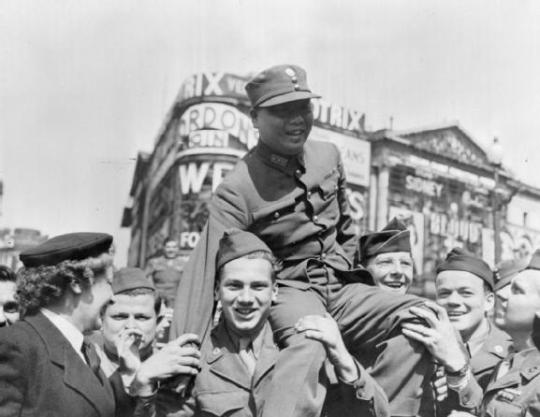



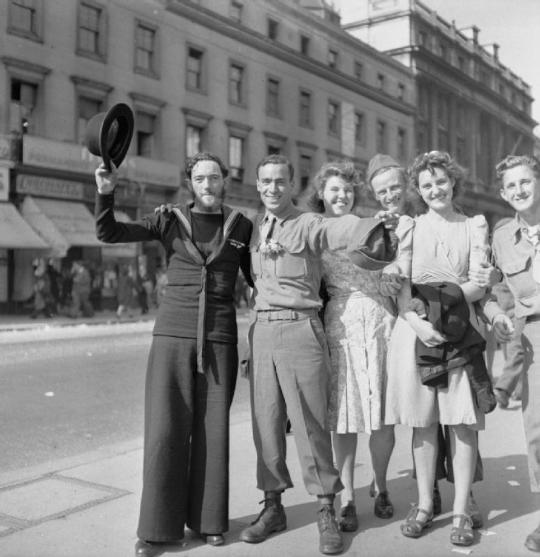


Celebrating the end of the Second World War
(Photographs courtesy of Imperial War Museum)
#we were there#world war 2#WWII#second world war#victory#VE#VJ#black and white#history#black history month
0 notes
Photo


Naib-Subahdar Ali Haidar 1913-1999
Ali Haidar was born on 21 August 1913 in Kohat, in modern day Khyber Pukhtunkhwa Province, Pakistan. His parents were of Pashtun and Bangash heritage.
During the Second World War, Haidar served as a Sepoy in the 6th battalion 13th Frontier Force Rifles, in the British Indian Army. On 9 April 1945, Haidar was 31 years old and fighting near Fusigano in Italy when he performed the act of bravery which earned him a Victoria Cross.
In Italy, during the crossing of the River Senio, near Fusignano, in daylight on 9th April 1945, a Company of the 13th Frontier Force Rifles were ordered to assault the enemy positions strongly dug in on the far bank. These positions had been prepared and improved over many months and were mainly on the steep flood banks, some 25 feet high.
Sepoy Ali Haidar was a member of the left-hand Section of the left-hand Platoon. As soon as the Platoon started to cross, it came under heavy and accurate machine gun fire from two enemy posts strongly dug in about 60 yards away. Sepoy Ali Haidar's Section suffered casualties and only 3 men, including himself, managed to get across. The remainder of the Company was temporarily held up.
Without orders, and on his own initiative, Sepoy Ali Haidar, leaving the other two to cover him, charged the nearest post which was about 30 yards away. He threw a grenade and almost at the same time the enemy threw one at him, wounding him severely in the back. In spite of this he kept on and the enemy post was destroyed and four of the enemy surrendered.
With utter disregard of his own wounds he continued and charged the next post in which the enemy had one Spandau and three automatics, which were still very active and preventing movement on both banks. He was again wounded, this time in the right leg and right arm. Although weakened by loss of blood, with great determination Sepoy Ali Haidar crawled closer and in a final effort raised himself from the ground, threw a grenade, and charged into the second enemy post. Two enemy were wounded and the remaining two surrendered.
Taking advantage of the outstanding success of Sepoy Ali Haidar's dauntless attacks, the rest of the Company charged across the river and carried out their task of making a bridgehead. Sepoy Ali Haidar was picked up and brought back from the second position seriously wounded. The conspicuous gallantry, initiative, and determination combined with a complete disregard for his own life shown by this very brave Sepoy in the face of heavy odds were an example to the whole Company.
His heroism had saved an ugly situation which would - but for his personal bravery - have caused the Battalion a large number of casualties at a critical time and seriously delayed the crossing of the river and the building of a bridge. With the rapid advance which it was possible to make the Battalion captured 3 officers and 217 other ranks and gained their objectives.
-London Gazette, 3 July 1945.
King George VI invested Ali Haidar with his VC at Buckingham Palace on 30 October 1945. He later achieved the rank of Naib Subahdar. Haidar passed away 15 July 1999 in Pakistan.
(Photographs courtesy of National Army Museum and the Imperial War Museum)
#we were there#Naib#Subahdar#Ali Haidar#British Indian Army#Indian Army#Italy#second world war#World War 2#victoria cross#bravery#initiative#determination#black history#black history month
4 notes
·
View notes
Photo


Lance Corporal Connie Mark 1923 - 2007
Connie Mark (nee Macdonald) on 21 December 1923 in Rollington Town, Kingston, Jamaica. Her heritage came from all over the world; she was part Scottish, part Indian, part Lebanese, and part Jamaican. Connie was well educated, and came from a family that strongly supported the royal family. When she left school she trained as a secretary.
In 1943, at the age of 19, Connie joined the Auxiliary Territorial Service (ATS) of the British Army. Connie worked as a medical secretary in the British military hospital with the Royal Army Medical Corps. She achieved the rank of lance-corporal, but felt she was not paid correct wages due to racial discrimination.
Connie retired from military life in 1955, but continued to fight throughout the rest of her life for the role of Caribbean servicewomen to be properly recognised. She moved to Britain in 1954 where she became active in her West London community; she formed the Gladiola Community Club, was treasurer to the Commission for Racial Equality, and was a member of the Mary Seacole Association. She received a British Empire Medal for meritorious service in 1991 and an MBE in 1993.
(Photographs courtesy of the Imperial War Museum)
#we were there#Lance Corporal#Connie Mark#Connie Macdonald#Jamaica#Auxiliary Territorial Service#British Army#Caribbean#British Empire Medal#MBE#recognition#racial equality#community#second world war#World War 2
7 notes
·
View notes
Photo
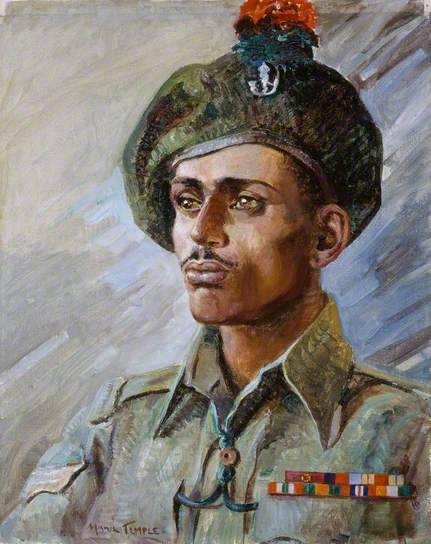
Subahdar Namdeo Jadhav 1922-1984
Namdeo Jadhav was born in Mumbai, India.
He was a Sepoy in the 5th Mahratta Light Infantry of the Indian Army during the Second World War. On 9 April 1945 Jadhav was 23 years old when he performed the act of bravery for which he was awarded the Victoria Cross.
Under intense enemy fire he carried two wounded men through deep water and up the precipitous river bank, through a mine belt, to safety. With tommy-gun and grenades, he then avenged his dead comrades by eliminating three enemy machine-gun posts, and, climbing to the top of the bank, and shouting the Mahratta war cry he waved the remaining companies across the river. He not only saved his friends’ lives but his superb bravery enabled the battalion to secure a deeper bridgehead and ultimately crush all German resistance in the area.
-The London Gazette, 19 June 1945
Jadhav remained with the Army after the War and later achieved the rank of Subahdar. He died on 2 August 1964.
(Portrait courtesy of the National Army Museum)
#we were there#Subahdar#Namdeo Jadhav#Indian Army#british forces#victoria cross#bravery#second world war#World War 2#black history#black history month
2 notes
·
View notes
Photo

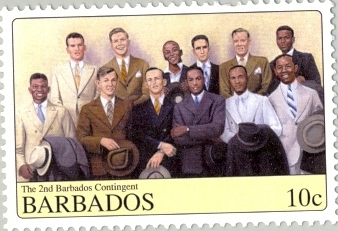
Grey Doyle Cumberbatch 1921-1943
Greystone Doyle Cumberbatch was born on 2 June 1921 in Grapehall, St Lucy, Barbados. He was the only son of Charles Wilkinson Cumberbatch and Octavia Cecily Clementina née Leacock. Cumberbatch, known as ‘Grey’, graduated from the prestigious Harrison College in St Michael, Barbados.
Cumberbatch volunteered for WWII service and joined the RAF as one of the twelve “Barbados Second Contingent”. Cumberbatch was killed on Thursday 5 March 1943 when his Lancaster bomber crashed whilst attempting to land at an airfield in England during World War II.
Cumberbatch and several members of his contingent left Waltham, Lincolnshire on 4 March in a Lancaster bomber for a mine-laying operation over St Nazaire. This was the first mission by 100 Squadron after they had received their Lancasters in March 1943. The plane returned on 5 March 1943 at just past 3am in the morning. Visibility was poor and the aircraft’s port inner engine was failing. Furthermore, the pilot was unable to communicate with the ground staff at Waltham. The pilot’s attempt to land was unsuccessful, and the aircraft came down in Plungar, Nottingham. All but one of the crew were killed in the crash.
Among the twelve men selected for the Barbados Second Contingent, depicted on a recent Barbados stamp, one was Errol W. Barrow. After the War, he entered politics and eventually become Barbados’ first Prime Minister.
#we were there#Grey Doyle#Cumberbatch#Barbados#Barbados Second Contingent#RAF#Royal Air Force#World War 2#second world war#black history#black history month
1 note
·
View note
Photo
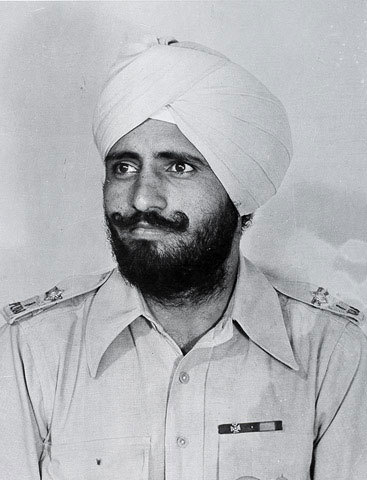
Major Parkash Singh 1913-1991
Parkash Singh was born on 31 March 1913. He enlisted in the Indian Army in 1936 and first served on the North West Frontier.
During the Second World War he saw action in the Burma campaign. The winter campaign of 1942-43 in the Arakan region was one of the most bloody of the whole war in the Far East. In January 1943, the 14th Indian Division, including Parkash who was serving as havildar with the 8th Punjab Regiment, was trapped between the sea and the jungle at Donbaik on the Mayu Peninsula. On 6 January Parkash Singh was driving a Bren-gun carrier.
On the 6th January, 1943, at Donbaik, Mayo Peninsula, Burma, when two Carriers had been put out of action, Havildar Parkash Singh drove forward in his own Carrier and rescued the two crews under very heavy fire. At the time, the crews of the disabled Carriers had expended their ammunition and the enemy were rushing the two disabled Carriers on foot. This N.C.O.’s timely and courageous action, entirely on his own initiative, saved the lives of the crews and their weapons. On the 19th January, 1943, in the same area, three Carriers were put out of action by an enemy anti-tank gun and lay on the open beach covered by enemy anti-tank and machine-gun fire. One of these Carriers was carrying the survivors of another Carrier in addition to its own crew. Havildar Parkash Singh, on seeing what had happened, went out from a safe position in his own Carrier, and with complete disregard for his own personal safety, rescued the combined crews from one disabled Carrier, together with the weapons from the Carrier. Having brought the crews to safety, he again went out on the open beach in his Carrier, still under very heavy anti-tank and machine-gun fire and with the utmost disregard for his personal safety, dismounted and connected a towing chain on to a disabled Carrier containing two wounded men. Still under fire, he directed the towing of the disabled Carrier from under enemy fire to a place of safety. Havildar Parkash Singh’s very gallant actions, entirely on his own initiative, were an inspiration to all ranks both British and Indian.
- The London Gazette, 13 May 1943
The Indian army served with distinction in the Burma campaign. Parkash Singh was the first of many to be awarded the Victoria Cross for action in Burma; soldiers from the Sikh regiments won a succession of honours and medals for bravery.
Singh received his VC from the Viceroy of India, Lord Linlithgow, at Delhi during July 1943. Parkash Singh was later commissioned and remained in the Indian Army after independence in 1947, eventually retiring with the rank of major in 1968. Singh passed away on 25 March 1991.
#we were there#Major#Parkash Singh#british forces#Indian Army#Burma Campaign#second world war#World War 2#victoria cross#bravery#gallantry#black history#black history month
5 notes
·
View notes
Text
Rifleman Thaman Gurung 1924-1944
Thaman Gurung was born on 2 October 1924 in Nepal. He was a Rifleman in the 1st Battalion, 5th Royal Gurkha Rifles in the Indian Army during the Second World War. Gurung was acting as a scout to a fighting patrol in Monte Pompegno, Italy. Gurung was only 20 years old when he died in service on 10 November 1944, in an act for which he was posthumously awarded the VC.
By skillful stalking both scouts succeeded in reaching the base of the position undetected. Rifleman Thaman Gurung then started to work his way to the summit; the second scout attracted his attention to Germans in a slit trench just below the crest, who were preparing to fire with a machine gun at the leading section. Realizing that if the enemy succeeded in opening fire, the section would certainly sustain heavy casualties, Rifleman Thaman Gurung leapt to his feet and charged them. Completely taken by surprise, the Germans surrendered without opening fire.
Rifleman Thaman Gurung then crept forward to the summit of the position, from which he saw a party of Germans, well dug in on reverse slopes, preparing to throw grenades over the crest at the leading section. Although the sky-line was devoid of cover and under accurate machine gun fire at close range, Rifleman Thaman Gurung immediately crossed it, firing on the German position with his Tommy gun, thus allowing the forward section to reach the summit, but due to heavy fire from the enemy machine guns, the platoon was ordered to withdraw.
Rifleman Thaman Gurung then again crossed the sky-line alone and although in full view of the enemy and constantly exposed to heavy fire at short range, he methodically put burst after burst of Tommy gun fire into the German slit trenches, until his ammunition ran out. He then threw two grenades he had with him and rejoining his section, collected two more grenades and again doubled over the bullet-swept crest of the hill top and hurled them at the remaining Germans. This diversion enabled both rear sections to withdraw without further loss. Meanwhile, the leading section, which had remained behind to assist the withdrawal of the remainder of the platoon, was still on the summit, so Rifleman Thaman Gurung, shouting to the section to withdraw, seized a Bren gun and a number of magazines. He then, yet again, ran to the top of the hill and, although he well knew that his action meant almost certain death, stood up on the bullet-swept summit, in full view of the enemy, and opened fire at the nearest enemy positions. It was not until he had emptied two complete magazines, and the remaining section was well on its way to safety, that Rifleman Thaman Gurung was killed. It was undoubtedly due to his gallantry that his platoon was able to withdraw from an extremely difficult position without many more casualties.
- The London Gazette, 20 February 1945
Rifleman Thaman Gurung was not photographed before his death. Portraits that exist today are composites from soldiers with similar features who were asked to pose for artists. Sketching continued until the Rifleman's comrades agreed the portrait accurately depicted Gurung.
#we were there#black history month#gurkha#british forces#bravery#world war 2#victoria cross#rifleman#thaman Gurung#Monte Pomopegno
0 notes
Photo


Leading Aircraft Woman Lilian Bader 1918-present
Lilian Bader (nee Bailey) was born in Liverpool. Her father was from the West Indies and had served with the Royal Navy, her mother was white British. Lilian was orphaned at the age of nine and lived in a convent until she was 20.
Lilian was ‘let go’ from her first employment because of issues with her heritage. However, she was determined to play her part in the war effort. After hearing a group of West Indian soldiers on the Radio talk about how they had been rejected from the Army but were able to join the Royal Air Force, Lillian quickly volunteered. She joined the Women’s Auxiliary Air Force (WAAF) at the beginning of 1941. She was one of the first women to be trained as an instrument repairer, a trade that was newly opened to women. In December 1941, Lilian became a Leading Aircraft woman (LACW) and soon gained the rank of Acting Corporal.
During the War she married a mixed race soldier called Ramsay Bader, who was a tank driver with the Army. Bader father was from Sierra Leone and his mother was white British. In February 1944 Lilian left the WAAF. The couple had two sons and she later trained to become a teacher.
Find out more about Lilian Bader’s life here and here.
#we were there#Leading#Aircraft Woman#Lilian Bader#Lilian Bailey#RAF#Royal Air Force#WAAF#Instrument repairer#acting corporal#second world war#World War 2#black history#black history month
6 notes
·
View notes
Photo
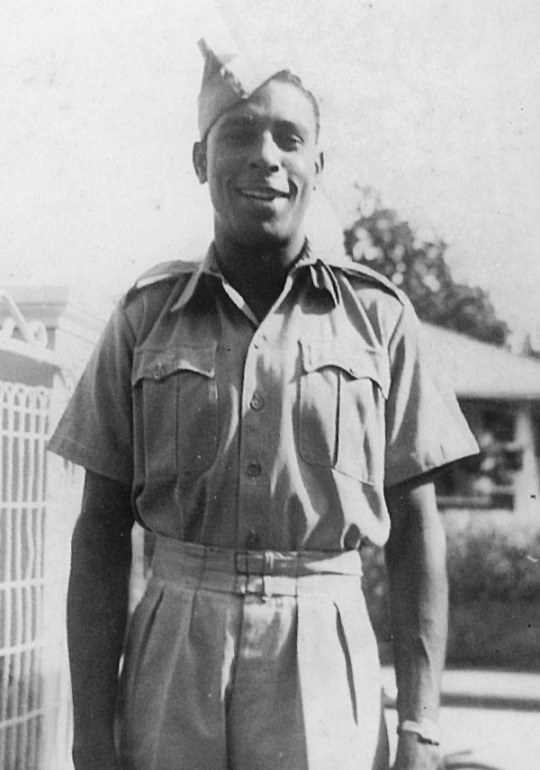

Squadron Leader Philip Louis Ulric Cross 1917–2013
Philip Louis Ulric Cross, was born 1 May 1917 in Trinidad. Cross, awarded the Distinguished Flying Cross (DFC) in 1944 and the Distinguished Service Order (DSO) in 1945, is possibly the most decorated West Indian Squadron Leader of World War II. After his career in the RAF he went on to become a judge and later a diplomat.
In 1941, aged 24, Cross joined the British Royal Air Force (RAF) and served as a Pilot Officer with 139 (Jamaica) Squadron with RAF Bomber Command, attaining the rank of Squadron Leader. He participated in numerous strikes across occupied Europe, racking up a total of 80 missions.
After high school, I worked for a while with the Government on the railroad. But by 1941, Britain stood alone. Dunkirk had been a defeat for Britain and Hitler had conquered all of Europe. The world was drowning in fascism and America was not yet in the war, so I decided to do something about it and volunteered to fight in the RAF. So from November 1941 to November 1942, I trained at Cranwell on the wireless, did meteorology, bomb aiming, navigation and Morse code. I graduated as a Pilot Officer and was assigned to Bomber Command I served as a navigator in the Pathfinder section of 139 squadron; the famous “Jamaica Squadron” of the RAF. The pathfinders led the way on bombing raids and marked the target; a most dangerous task.
I was the only West Indian on my squadron. My most harrowing mission was when one of the engines of our Mosquito fighter-bomber was shot up over Germany and we came down to 7,000 feet from 35,000 feet. We struggled back to England and crash landed in a quarry.
In all 250 Trinidadians flew in combat in the RAF during the war and 50 died in action. Many hundreds more, maybe more than a thousand, served with other West Indians, as ground crew. I knew the Jamaican Vincent Bunting; he was a fighter pilot and I believe he flew in the Battle of Britain. I met him in England. Our Trinidadian contingent also had people of Indian, Chinese and European origin.
In 1945 he was also awarded the DSO in recognition of his “Fine example of keenness and devotion to duty” and “exceptional navigational ability.”
Sadly, Ulric Cross died while this blog was being produced. You can read his obituary in the Telegraph.
#we were there#Squadron Leader#Philip Louis Ulric Cross#Trinidad#West Indies#RAF#Royal Air Force#Distinguished Flyng Cross#Distinguished Service Order#judge#diplomat#Jamaica Squadron#Bomber Command#World War 2#second world war#black history#black history month
3 notes
·
View notes
Photo
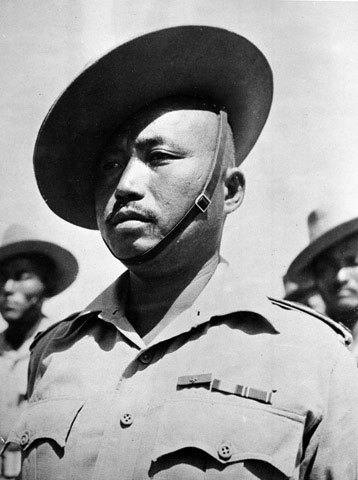
Subahdar-Major Lal Bahadur Thapa 1906-1968
Lal Bahadur Thapa was born in Nepal in February 1906.
Lal Bahadur Thapa was a Subahdar in the 1st Battalion, 2nd Gurkha Rifles, Indian Army during World War II when he was awarded his Victoria Cross for his actions on the night of 5-6 April 1943. He led two sections of 'D' Company, 1st Battalion, 2nd Gurka Rifles, in an attack on the position in Resse-es-Zouai near Wadi Arakit in Tunisia. The capture of this position was vital to the company's advance and could only be achieved by an advance up a narrow gully that could be swept with fire from a series of enemy machine gun positions.
The garrisons of the outer posts were all killed by Subadar Lal Bahadur Thapa and his men by kukri or bayonet in the first rush and the enemy then opened very heavy fire straight down the narrow enclosed pathway and steep arena sides. Subadar Lal Bahadur Thapa led his men on and fought his way up the narrow gully straight through the enemy's fire, with little room for manoeuvre, in the face of intense and sustained machine gun concentrations and the liberal use of grenades by the enemy. Next the machine-gun posts were dealt with, Subadar Lal Bahadur Thapa personally killing two men with his kurki and two with his revolver. This Gurkha officer continued to fight his way up the narrow bullet-swept approaches to the crest. He and two riflemen managed to reach the crest, where Subadar Lal Bahhadur Thapa then secured the whole feature and covered his company's advance up the defile.
-The London Gazette, June 1943
He went on to achieve the rank of Subahdar-Major and earn an Order of British India (1st Class) and star of Nepal (4th Class). Lal Bahadur Thapa passed away on 19 October 1968, aged 62, in Nepal.
(Photographs courtesy of National Army Museum and Imperial War Museum respectively)
#we were there#Subahdar#Major#Lal Bahadur Thapa#Nepal#Gurkha#Indian Army#british forces#victoria cross#bravery#second world war#world war 2#black history#black history month
1 note
·
View note
Photo
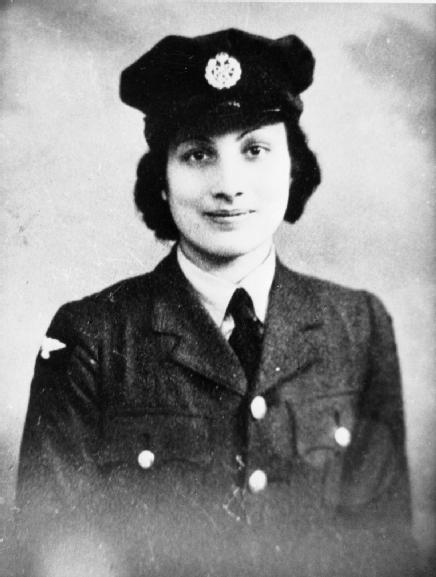

Noor Inayat Khan 1914-1944
Noor Inayat Khan was born to an Indian father and an American mother in Moscow, Russia, on New Year’s Day 1914. Through her father, Khan was a direct descendant of a Muslim ruler of Mysore, Tipu Sultan.
Khan spent the most part of her childhood in Paris and was educated there, making her a proficient French speaker. After the fall of France in November 1940, Khan escaped to England. Khan then volunteered for the Women’s Auxiliary Air Force WAAF as an Aircraftswoman, 2nd class, but later trained as a wireless operator. In November 1942 she was recruited as a secret agent by the Special Operations Executive (SOE) because of her skills in French. In June 1943 Noor arrived in France under the codename ‘Madeleine’ and became the first female wireless operator sent into Nazi-occupied France. She worked as an essential link sending transmissions between London and Paris. Khan was constantly on the run from the Gestapo and had to frequently move around.
She was eventually betrayed by an informer and captured by the Gestapo who interrogated her. In November 1943, she was transferred to Pforzheim prison where she was kept shackled and in solitary confinement. She refused to talk and made frequent unsuccessful attempts to escape from prison. In September 1944, Noor and three other female SOE agents were taken to Dachau Concentration Camp. On the morning of 13 September 1944 she was executed. It is reported that her final words were ‘Liberté’
She refused however to abandon what had become the principal and most dangerous post in France, although given the opportunity to return to England, because she did not wish to leave her French comrades without communications and she hoped also to rebuild her group. She remained at her post therefore and did the excellent work which earned her a posthumous Mention in Despatches…Khan displayed the most conspicuous courage, both moral and physical.
-The London Gazette, 5 April 1949
In 1949 she was posthumously awarded the George Cross and the Croix de Guerre from France. On 8 November 2012, Her Royal Highness the Princess Royal unveiled the Noor Inayat Khan Memorial in Gordon Square Gardens, London. The opening ceremony was attended by over 450 people, including Noor's family, veterans, M.Ps, peers, Ambassadors, High Commissioners and guests from India, USA, Germany, Netherlands, France and Russia.
(Photographs courtesy of Imperial War Museum)
#we were there#Noor Inayat Khan#WAAF#wireless#madeleine#Special Operations#France#Spy#Liberty#Liberte#courage#George Cross#Criox de Guerre#second world war#world war 2#black history#black history month
1 note
·
View note
Photo

Squadron Leader Karun Krishna Majumdar
Karun Krishna Majumdar was awarded the Distinguished Flying Cross - the first to be awarded to an Indian Air Force officer - for the gallantry and leadership that he displayed while serving as the commanding officer of No 1 Squadron, Indian Air Force, during the retreat from Burma in 1942.
In December 1941 Majumdar and his squadron kicked in action as the War moved to the Far East. No 1 Squadron, known as the ‘Tigers’, of the Indian Air Force started their journey to Burma in January 1942 in their new Lysander aircraft. On the first of February, the squadron were posted to Toungoo and assigned the task of tactical reconnaissance missions. By the third, Majumder had successfully bombed a hangar at Mae-Huangsan airfield. The squadron continued to strike key Japanese air bases, facing the dangers of flying unescorted and at a low level. Accompanied by Flight Lieutenant Singh, Majumdar went to Lashio to assist the Chinese Army with their operations against the Japanese. The Chinese were so impressed with the Squadron’s performance, reconnaissance information and bearing that they presented the Tigers with a “Gold Wing”. Throughout the campaign in Burma, Squadron Leader Majumdar proved a highly capable and courageous leader, earning him the Distinguished Flying Cross.
He was subsequently awarded a Bar to the DFC in recognition of his bravery and skill while serving as a tactical reconnaissance pilot with No 268 Squadron, Royal Air Force, during the liberation of France in 1944. He flew a total of 68 sorties through the course of the War. Squadron Leader Majumdar was the only Indian Air Force officer to receive two DFCs during the Second World War.
He died on 17 February 1945 while practicing maneuvers due to a technical malfunction in the aircraft he was flying.
#we were there#Squadron Leader#Karun Krishna#Majumdar#distinguished Flying Cross#Indian Air Force#RAF#Burma Campaign#Tigers#leadership#gallantry#second world war#world war 2#black history#black history month
1 note
·
View note
Photo

Field Marshal Sam Manekshaw 1914-2008
Sam Hormusji Framji Jamshedji Manekshaw MC was born in Amritsar to Parsi parents on 3 April 1914, and became known as Sam Bahadur, meaning "Sam the Brave". His military career lasted four decades and covered five wars, beginning with service in the British Indian Army in the Second World War. He was the first Indian Army Officer promoted to the rank of Field Marshal, reaching the zenith of his distinguished career in the Indian military as a formidable and quick-witted Army Chief.
While part of the British Indian Army fighting in Burma in 1942 on the Sittang River, Manekshaw was a Captain with the 4/12 Frontier Force Regiment. He was part of a counter-attack against the Japanese Army, trying to seize the key strategic location of Pagoda Hill. Even though his company had 50% casualties, the hill was captured thanks to Manekshaw’s leadership and influence. Unfortunately, after the hill was taken, Manekshaw was hit by a round of bullets in his lungs, liver and kidneys. With Manekshaw dangerously close to death, Major General D.T. Cowan pinned his own Military Cross ribbon to Manekshaw’s chest saying, "A dead person cannot be awarded a Military Cross."
Despite the surgeon nearly refusing to operate on Manekshaw because of the severity of his wounds, he fought the odds and recovered. By December 1943, Manekshaw graduated from the Staff College in Quetta and was posted as Brigade Major of the Razmak brigade. On 22 October 1944 he was sent to join the 9th Battalion, 12 Frontier Force Regiment in Burma. He also worked as staff officer to General Daisy before the Japanese surrender, when he helped with the rehabilitation of over 10,000 prisoners of war.
Find out more about Sam Manekshaw’s life and character here.
#we were there#field marshal#Sam Manekshaw#Sam the Brave#British Indian Army#Indian Army#Burma Campaign#second world war#world war 2#Military Cross#black history month#black history
2 notes
·
View notes
Photo
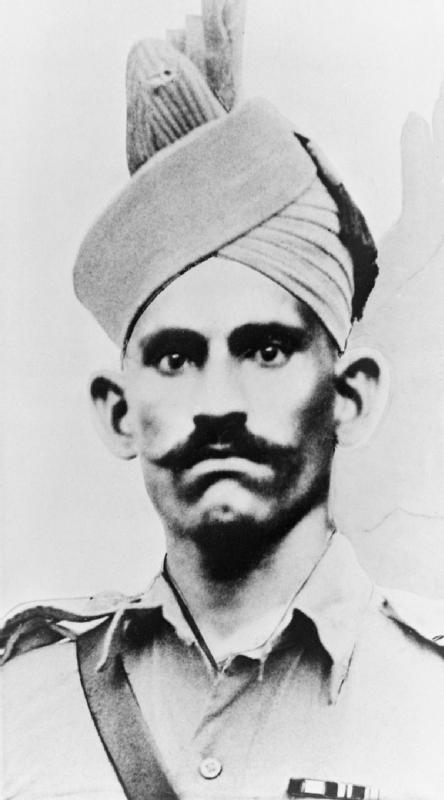
Jamadar Abdul Hafiz 1925-1944
Abdul Hafiz was born on 4 September 1925 in Kalanaur in the Punjab.
In Burma on 6 April 1944, whilst serving with the 9th Jat Regiment of the Indian Army, Jamadar (Lieutenant) Hafiz led an attack against Japanese forces in the hills north of Imphal. They were met with strong resistance and even though Hafiz was wounded by enemy fire, he still continued to attack enemy positions and killed several of the enemy. Hafiz was fatally wounded by machine-gun fire from another Japanese position. He was 19 at the time.
The inspiring leadership and great bravery displayed by Jemadar Abdul Hafiz in spite of having been twice wounded, once mortally, so encouraged his men that the position was captured, casualties inflicted on the enemy to an extent several times the size of his own party, and enemy arms recovered on the position which included three Lewis Machine-guns, two grenade dischargers and two officers' swords. The complete disregard for his own safety and his determination to capture and hold the position at all costs was an example to all ranks, which it would be difficult to equal.
-The London Gazette
He was posthumously awarded the Victoria Cross
(Photographs courtesy of Imperial War Museum)
#we were there#Jamadar#Abdul Hafiz#Burma Campaign#second world war#world war 2#Indian Army#victoria cross#bravery#sacrifice#black history month#black history
3 notes
·
View notes
Photo


Subahdar-Major Gian Singh 1915-1996
Gian Singh was born in Sahabpur Village in the Punjab and served with the 15th Punjab Regiment.
Singh had faced Japanese tactics before the day he earned his Victoria Cross on 2 March 1945. In May 1944 he and his regiment were involved in repelling the Japanese from Kohima, which was a strategically vital location, giving access to the plains of India. The defence held, the Japanese were pushed back, and the route to Calcutta was safe.
In 1945 Niak (Corporal) Gian Singh was once again fighting the Japanese, but now in Burma. His company was advancing between Kamya and Myingyan on 2 March 1945 when they came under heavy fire. He witnessed numerous losses and injuries among his comrades, inflicted from concealed positions. He launched a single handed attack against the Japanese and despite being wounded in the arm he continued throwing grenades and attacking enemy foxholes with his sub-machine gun.
Gian Singh's extraordinary bravery followed the tradition of Ishar Singh, who won his Victoria Cross in 1921, also of the 4th Battalion. Just sixteen days later, the actions of Lieutenant Karameet Singh Judge earned the 4th Battalion its third Victoria Cross. On 16 October 1945, Gian Singh was awarded the Victoria Cross by King George VI at Buckingham Palace.
Singh continued to serve in the Indian Army until his retirement, reaching the rank of Subahdar-Major. He passed away in 1996 in Jullundur.
(Photographs courtesy of Sikhs in the Army)
#we were there#Subahdar#Major#Gian Singh#India#Indian Army#Sikh#Burma Campaign#victoria cross#bravery#world war 2#second world war#black history#black history month
1 note
·
View note